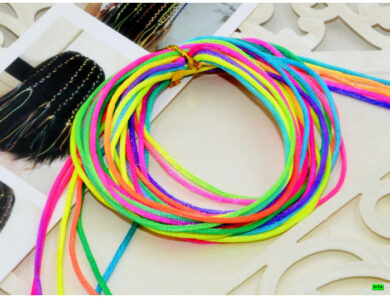Fiberglass reinforcement for the foundation: expert reviews
Any concrete structure has a reinforcing frame, which is traditionally made of steel elements. Relatively recently, fiberglass fittings have been used for these purposes, application of which to strengthen the foundation, if you take into account the feedback of experts, is a great solution.
Reinforcement of strip foundation with fiberglass reinforcement
The main disadvantages of metal fittings
Armor frame, which is in every foundation, eliminates the risk of destruction of the concrete structure, what can happen under the influence of bending and compressive loads. In the presence of such a framework, which was previously made only of metal reinforcing elements, the foundation can withstand heavy loads, arising from frost heaving of the soil. In such a reinforced concrete structure there are almost no cracks, delamination and other defects, affecting its reliability and durability.
Meanwhile, metal reinforcing elements have disadvantages, the main of which is, that the metal is poorly resistant to high humidity and aggressive environments (salty sea water, concrete milk, etc.). As a result of such interaction Corrosion processes arise and develop in metal designs.
Corrosion affects the integrity of the concrete structure
It is not recommended to use metal reinforcing structures to strengthen the concrete structures of those buildings, premises which are subject to requirements for radio-transparency and magnetic inertia. We are talking about the premises, in which complex electronic equipment is installed (various research centers, laboratories, medical institutions). Only dielectric fiberglass reinforcement can be used to strengthen the foundations and walls of such buildings and premises., which appeared on the construction market relatively recently.
Comparative characteristics of steel and fiberglass reinforcement
What is a reinforcement of composite materials
Composite fittings are a great alternative to traditional products for this purpose, made of metal. To date, the construction market presents the following options for reinforcing products:
- of staple fiberglass type, made of inorganic glass by its melt (fiberglass of this type has good thermal insulation and reinforcing characteristics, which determined the main areas of its application: heat-insulating plates are made of staple fiberglass, glass wall-paper for finishing of walls, cloths for reinforcement, individual fibers, with the help of which concrete screeds and plastered surfaces are strengthened);
- with materials, used as fasteners (thermosetting resins, relating to the non-curable type, the most famous of which are epoxy and epoxy-diana);
- with additives, the use of which allows to increase the ductility and strength characteristics of the fittings, made of composite materials.
One of the stages of creating non-metallic fittings: feeding and unwinding of roving
Armature, made of composite materials, is available in two versions.
With special corrugation on the surface
The technology of obtaining such a surface is as follows. A fiberglass thread is wound on a smooth rod made of composite material, which forms the elements of corrugation. Then the surface of the rod with the thread wound on it is covered with a thin layer of resin made of polymeric material. Reinforcing bar with such corrugation due to the increase in contact area is much better bonded to the concrete mortar, well strengthening it. These bars are used to reinforce foundations and other massive concrete structures.
Improved type of fiberglass fittings
With a relatively smooth profile
In order to ensure good adhesion of such a rod to the concrete mortar, powder is applied to its surface, as which fine sand is used. Due to the complex technological process of manufacturing such fittings, its cost is slightly higher, than the price of composite reinforcing products of other types.
Composite reinforcement, covered with quartz sand
It is better to be guided in characteristics of reinforcing elements, made of composite materials, comparative parameters of fiberglass products will help, basalt and carbon fiber.
- The modulus of elasticity of fiberglass products is 55000 MPa, and in products from basalt fibers - 78000 MPa.
- Temporary rupture resistance of reinforcing products, made of fiberglass, – 1250 MPa, in reinforcement of basalt fibers - 1450 MPa.
- The advantage of fiberglass fittings is its cost, which is approximately on 15% lower, than the price of basalt fiber products.
Reinforcement made of composite materials can be released to the customer as cut rods, the length of which is 6 m, and bays, in each of which can be wound from 50 to 100 meters of products. The diameter of the bars of non-metallic reinforcement can be from 4 to 18 mm.
Fiberglass fittings in the bays on 50 meters
Advantages and disadvantages of non-metallic fittings
Apparently, the most significant advantage of fiberglass reinforcement is its inertness in relation to various aggressive environments. So, foundation, which is reinforced with such fittings, not terrible salty sea water, as well as solutions, which contain alkaline and acidic components. No less important are the advantages of composite reinforcing elements:
- resistance to decay processes, formation and development of corrosion;
- light weight (So, one meter of fiberglass fittings, having a diameter 6 mm, weighs everything 0,05 kg, while the mass of a meter of the same wire, made of metal, is 0,395 kg);
- transparency for magnetic waves and radio waves due to dielectric material;
- no major difficulties in transportation and use;
- the proximity of the coefficient of thermal expansion to the corresponding figure for concrete;
- versatility and ease of use, allowing to apply such fittings in many spheres.
Comparison of parameters of composite and steel reinforcement
If we talk about the use of fiberglass fittings, then she is, as well as products of similar purpose from metal, used to strengthen foundations, concrete columns, pillars, supporting structures for other purposes. in addition, such fittings are used in road construction, for strengthening of industrial floors, walls of septic tanks, sidewalks, decking, fencing structures, etc..
Fiberglass reinforcement is often used to replace metal rods in the production of floor slabs and shaped concrete products.. Experience in the use of reinforcement made of composite materials shows that, that it demonstrates itself well as an element in strengthening the foundations of wooden and frame houses.
Table of equal-strength replacement of metal fittings with fiberglass
If we talk about the shortcomings of fiberglass fittings, then they should include the following.
- Armature, made of fiberglass, does not tolerate high temperatures.
- Compared with metal products, fiberglass reinforcement withstands tensile and compressive loads much worse. So, modulus of elasticity of metal reinforcing bars 3,5 times higher, than fiberglass products. Foundation for a large construction site, for strengthening of which such armature is used, it is necessary to fill very slowly, constantly adjusting their actions. If you do not follow this recommendation of experts, with extensive experience in using this material, then the concrete frame can "float".
- At considerable loadings the framework from fiberglass fittings can start to bend, which leads to chipping, cracks and other defects of concrete structures.
Fiberglass fittings: which lead to overheating of the gasoline or diesel engine
Alexey N..
He built a small bathhouse on his suburban plot, and chief of the construction crew, who manages this whole process, advised me to buy fiberglass reinforcement for the foundation. I decided to save and bought fittings cheaper, and there was no big choice in the construction market. As a result, the foreman criticized my purchase, as the low quality of cheap fiberglass fittings was noticeable even to the naked eye: inflows on the surface of the rod, uneven corrugation winding, abrasive protective resin. In general, could not save, had to go back to the construction market and exchange fittings for more expensive and high quality, naturally, with surcharge.
Volodymyr
Based on expert reviews and advertising videos on the Internet, decided to use fiberglass reinforcement to strengthen the strip foundation under the house. I can not say anything bad about the ease of use of such fittings, but for dimensional concrete structures it is still better to use metal rods. All right, that noticed in time, that cracks began to appear on my foundation with such reinforcement, had to strengthen it with metal strips.
Oleg Panov
He built a brick fence, the foundation for which it was possible not to reinforce, but I decided to insure myself and make a reinforcing frame of fiberglass reinforcement. It is a pleasure to work with such fittings, easy to cut, and plastic clamps can be used to tie it, which I did. Pouring the foundation also went smoothly. The fence has been standing for six months, the foundation is intact, no chips, no cracks.
Sergey T..
For reinforcing the walls of the house, which was built of foam blocks, used fiberglass fittings. He placed it every four rows of blocks in pre-prepared gates. I am satisfied with the result, and to work with such fittings do not require any special tools and welding. The walls turned out strong and stable.
Andrew, Saratov
We built a small extension to the house, and the customer insisted, that for reinforcement of the base we used fiberglass fittings. So, he saved on the cost of order material 20-30%. What can I say, that it is much easier to work with such fittings, than with metal, and when pouring concrete problems do not arise. I have been building for a long time, and, as it seems to me, the disadvantages of such fittings may manifest themselves over time. Still, it should be taken into account, that it is made of polymeric material, whose characteristics can seriously deteriorate over time. Badly, that there is no data on this account yet, since such material appeared on our market recently.
Simonov N.
When choosing, which fittings - metal or fiberglass - to use to strengthen the foundation of a small extension to your home, decided to study the statistics. According to these data, in such countries, as the United States, Canada and Japan, these fittings are used in 20% cases of construction. Decided, that for a small extension it is quite suitable, there will be no heavy loads on the foundation. The extension has been standing for more than six months, I closely monitor the condition of the foundation. So far so good, no defects were found.
Anton, Voronezh
We still have some fiberglass fittings after the construction of the wooden bath, and we all thought, where else it could be used. In the spring we decided to make it an arc for a greenhouse - a great solution, tell you. It is easy to cut, to bend, does not rust (and what else is needed for the arcs?). And not so difficult, like metal rods.




